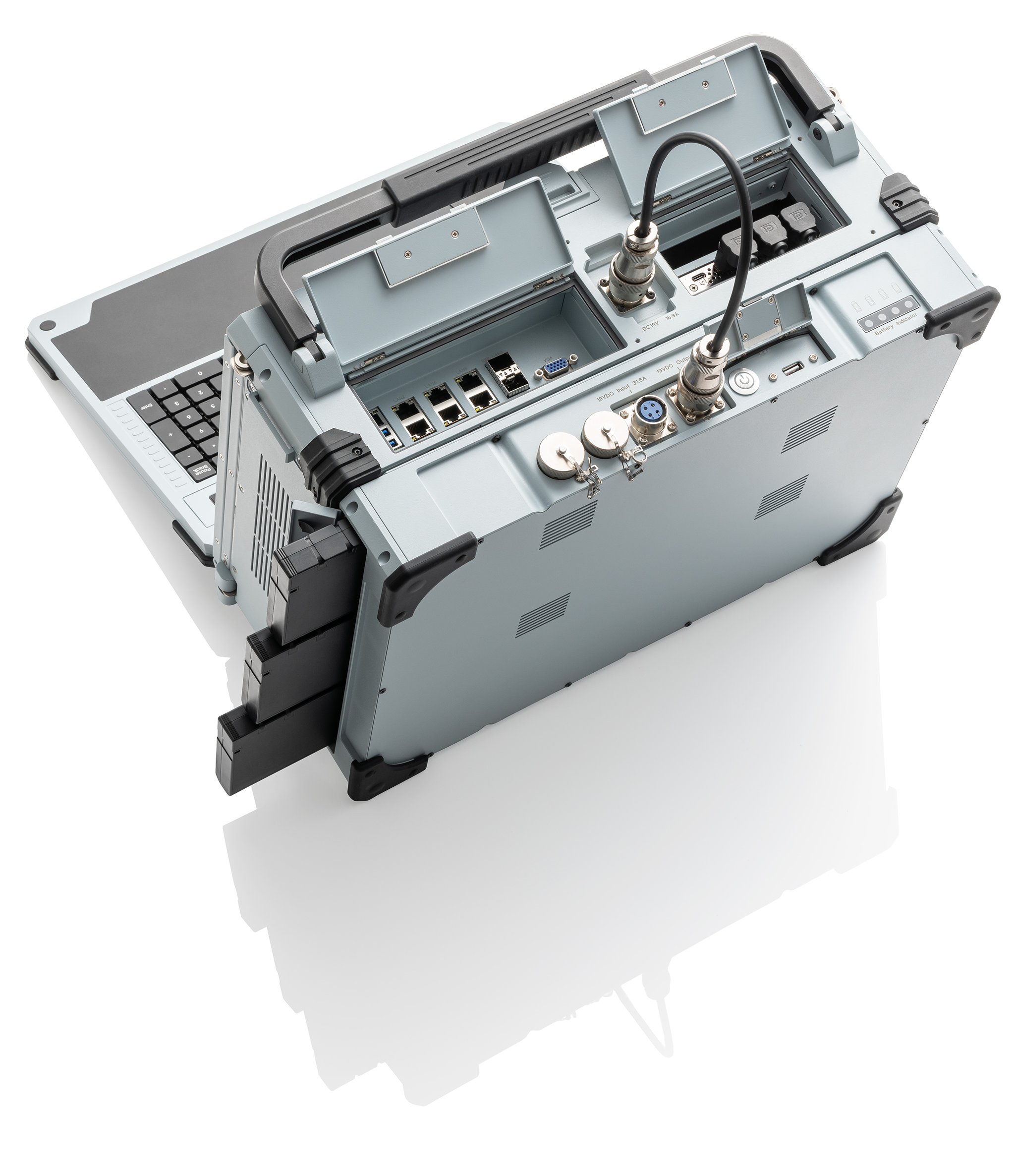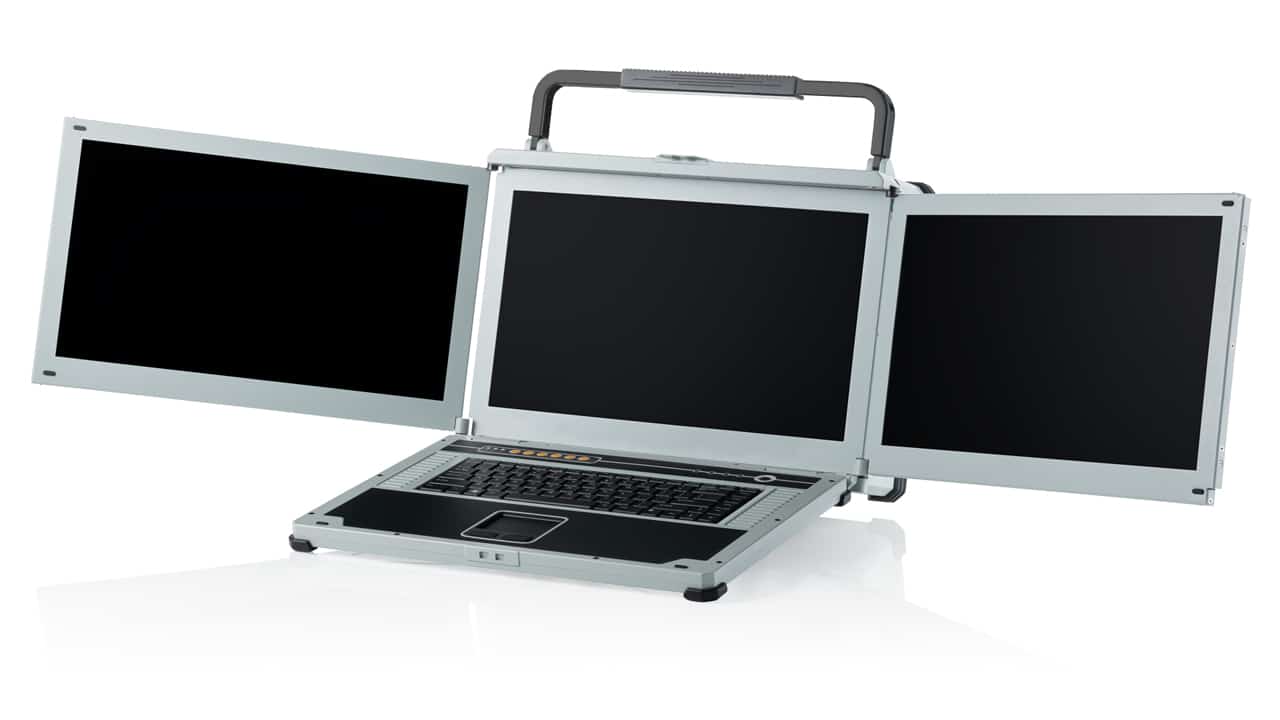Laptop computers with expansion slots Portexa NotePAC-III-PRO-V Triple screen portable server with expansion Getac X500 Single screen portable server with expansion “If you need a portable laptop-style computer with an expansion slot or two, there are not many options…. Common Features Large laptop portables Two PCIe expansion slots Fast processing Lots of connectivity Two alternatives… Continue reading Rugged laptops with expansion slots – X500 and NotePAC
Category: Portable Workstation
Unlimited battery power! NotePAC-III-PRO-V with Power Pack.
Click on image for larger view Announcing the NotePAC-III-PRO-V POWER PAC 4+ hour battery life rugged portable The NotePAC-III-PRO-V is the most powerful computer in it’s class. Triple screen portable computers with 16 core Xeon’s and expansion slots are inherently both powerful and require external power…. Until now! An additional machined aluminum chassis attaches to… Continue reading Unlimited battery power! NotePAC-III-PRO-V with Power Pack.
Deployable Video Processing Laptop
Deployable Video Processing Laptop Rugged triple screen Xeon portable with video capture card NotePAC-III-PRO-V Vertical triple screen portable NotePAC-III-PRO Rugged laptop – triple screen NotePAC-III-SC Rugged laptop – Special configuration Video capture hardware solution Many security and surveillance missions rely on video. They need to monitor, capture, and disseminate video feeds. If a… Continue reading Deployable Video Processing Laptop
PCT Multi-touch screens on portable workstation
MegaPAC L1, L2 & L3 Now with PCT Multi-touch screens Multi-touch portable workstations The latest touch screen technology is now available on large deployable workstation screens. The ACME MegaPAC is now available with Projected Capacitive Touch screens. Single, dual and triple screen workstations are available, and whichever system suits your… Continue reading PCT Multi-touch screens on portable workstation
Mil-DTL-901E Tested Laptop
Mil-DTE-901E Lightweight. The lightweight test is a test performed on the lightweight shock machine. The weight of the test item including fixture to attach it to the test machine shall be less than 550 pounds. Items to be tested shall be classified in accordance with one of the following grades, as specified: Grade… Continue reading Mil-DTL-901E Tested Laptop
Ergonomic portable workstation
Ergonomic Portable Workstation FlexPAC-T High-performance portable workstation with an adjustable screen The FlexPAC-T is a new take on a classic packaging of computer components – The Compaq Portable-III. Tilting just the display gives a stable and ergonomic working position for the operator. The full-sized keyboard with numeric keypad and large touchpad combine to make… Continue reading Ergonomic portable workstation
Quad display portable workstation
MegaPAC-RD-24 Portable Workstation EATX Dual Xeon Portable Power. Multi-display portable workstation Introducing the MegaPAC-RD. The all-new MegaPAC-RD is available with one, two, three or four displays. Displays can be mounted on the left or right, and also on top of the main chassis. In other words, the MegaPAC-RD gives the ultimate in flexibility to arrange… Continue reading Quad display portable workstation
Dual Screen Transportable Workstation
Dual-screen Transportable Workstation Maximum computing power in a rugged transportable chassis When you need a whole lot of computing capability, and plenty of screen real-estate, it’s important that the transportable workstation you choose will always work when you arrive on site. The MegaPAC-S2 is a modern, robust, professional workstation ready for deployment. Two 23.7″ displays… Continue reading Dual Screen Transportable Workstation
Three Screen Laptop
NotePAC-III NotePAC Data Sheet | Secondary Link Rugged three screen laptop with: 3 x 17.3″ HD displays 12 Core Xeon processor (D-2166NT) 2 x PCIe expansion slots (x16, x8) Optional Nvidia Quadro 4000 graphics Backlit keyboard Integrated CAC card reader Eight Lan ports – 2 Fiber SPF+ 10G, 2 RJ45 10G, 4 RJ45 Gigabit.… Continue reading Three Screen Laptop
Sunlight Readable Deployable Workstation
MilPAC-III Performance Dual Xeon, liquid cooled. Server grade motherboard. Nvidia graphics. Removable HDD and SSD options. Request a quote Mil-spec shock & transit The MilPAC-III is certified to MIL-STD-810G, Method 514.5, Figure 514.5C-5 Loose cargo test setup, 0- 50 degrees C. Data Sheet Made in the USA Proudly manufactured in Azusa CA. The Factory (link)… Continue reading Sunlight Readable Deployable Workstation


